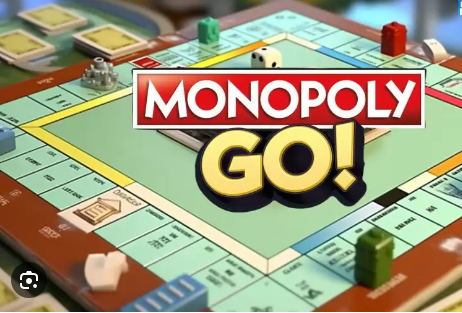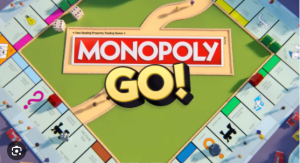I. Introduction
- Briefly introduce the concept of Monopoly as a classic board game.
- Discuss its popularity and enduring appeal among players worldwide.
II. Origins and History
- Trace the origins of Monopoly, from its inception to its evolution into the game we know today.
- Highlight key milestones, including the game’s creators, patents, and adaptations over time.
III. Game Components
- Detail the components of the Monopoly game board, including the properties, cards, tokens, and currency.
- Explain the significance and role of each component in gameplay.
IV. Gameplay Mechanics
- Describe the objective of Monopoly and how players progress through the game.
- Explain the rules of acquiring properties, paying rent, and managing finances.
- Discuss Chance and Community Chest cards and their impact on gameplay.
V. Strategies and Tactics
- Explore different strategies players can employ to gain an advantage.
- Discuss property acquisition, negotiation tactics, and financial management tips.
VI. Variations and Editions
- Highlight the various editions and versions of Monopoly available.
- Discuss themed editions, special rules, and regional variations of the game.
VII. Cultural Impact
- Explore the cultural significance of Monopoly in society.
- Discuss its portrayal in media, its influence on pop culture, and its role in social settings.
VIII. Monopoly Beyond the Board
- Discuss the digital adaptations and online versions of Monopoly.
- Explore the mobile apps and video game adaptations of the classic board game.
IX. Controversies and Criticisms
- Address controversies or criticisms associated with Monopoly, such as its portrayal of capitalism or its perceived length and competitiveness.
X. Educational Value
- Highlight the educational benefits of playing Monopoly, such as financial literacy and strategic thinking.
XI. Conclusion
- Summarize the enduring legacy and appeal of Monopoly.
- Encourage readers to engage with the game and explore its various facets.
Understanding Monopoly: A Comprehensive Overview
Introduction to Monopoly
Monopoly is an iconic board game that has captivated players for decades. Created by Charles Darrow in the early 20th century and later published by Parker Brothers, Monopoly has become a household name in the realm of board games. It is renowned for its blend of strategy, luck, and negotiation, making it an engaging and enduring pastime for players of all ages.
Origin and Evolution
The origins of Monopoly can be traced back to the early 1900s when it emerged as a modification of an earlier game called “The Landlord’s Game.” Initially created by Elizabeth Magie in 1903, this precursor to Monopoly was designed to illustrate the negative aspects of concentrating land in private monopolies. Over time, variations of the game were developed, and in the 1930s, Charles Darrow made significant alterations, leading to the version we know today.
Objective of the Game
The primary objective of Monopoly is to amass wealth and bankrupt opponents by buying, developing, and trading properties. Players navigate a board divided into spaces representing properties, utilities, and chance or community chest cards. Through dice rolls, they move around the board, purchasing properties to build houses and hotels, charging rent to opponents who land on their owned spaces.
Components of the Game
Board
The Monopoly board consists of 40 spaces arranged in a square. These spaces comprise 28 properties divided into color groups, four corner squares (Go, Jail/Just Visiting, Free Parking, and Go to Jail), and various cards and utility spaces.
Tokens
Players choose from a variety of tokens to represent themselves on the board, such as a top hat, a car, a dog, and more. These tokens are iconic and add a personalized touch to the gameplay experience.
Money
Monopoly features paper money in various denominations, allowing players to conduct transactions for properties, houses, hotels, and paying rents.
Property Cards
Each property on the board corresponds to a property card containing information about the purchase price, rent cost, and potential costs for building houses and hotels.
Gameplay Mechanics
Starting the Game
Players roll dice to determine the initial turn order, with the highest roller going first. They then take turns moving their tokens around the board according to their dice roll.
Acquiring Properties
When a player lands on an unowned property, they have the option to buy it at the listed price. If they choose not to purchase it, the property goes up for auction, allowing other players to bid for it.
Building Houses and Hotels
Once a player owns all properties within a color group, they can begin to develop them by purchasing houses and later hotels. The rent charged to opponents who land on these properties increases with each house or hotel built.
Chance and Community Chest
Landing on these spaces prompts a player to draw a card, which could bring opportunities or setbacks, such as receiving or paying money, advancing to a specific space, or losing a turn.
Jail
Players can land in Jail by rolling doubles three times in a row, drawing a “Go to Jail” card, or landing on the “Go to Jail” space. While in Jail, a player can either pay a fine to get out immediately or attempt to roll doubles
to exit on their turn. Alternatively, they can wait for three turns before automatically being released.
Trading and Negotiation
One of the key elements of Monopoly is negotiation among players. They can trade properties, money, or even get out of paying rent in exchange for various deals. Skilled negotiation can significantly impact a player’s position in the game.
Bankruptcy
As the game progresses, players may face financial challenges and struggle to pay rents or other fees. If they cannot afford these expenses, they go bankrupt, forfeiting all their assets to the creditor and exiting the game. The last player remaining with assets and solvency becomes the winner.
Strategies and Tactics
Property Acquisition
An effective strategy involves acquiring properties strategically. Players aim to obtain complete color groups to increase their chances of building houses and hotels, thereby escalating rents and potentially bankrupting opponents more quickly.
Development and Investment
Investing in houses and hotels on properties with higher traffic (more likely to be landed on) can yield greater returns. However, careful management of resources is crucial as spreading too thin across the board might diminish funds for future investments.
Negotiation Skills
Successful negotiation can be pivotal in Monopoly. Making beneficial deals with opponents, trading properties, or avoiding high rents through negotiations can significantly influence a player’s success.
Jail Management
While landing in Jail may seem disadvantageous, it can also act as a strategic move. It prevents players from landing on opponents’ highly developed properties and gives them time to plan their moves or avoid certain risks.
Cultural Impact and Legacy
Monopoly has left an indelible mark on popular culture since its inception. It has been adapted into various versions, including themed editions based on movies, cities, and popular franchises, further cementing its cultural relevance.
Conclusion
In conclusion, Monopoly remains a timeless classic that continues to entertain and challenge players worldwide. Its blend of luck, strategy, negotiation, and the pursuit of wealth through property ownership has made it a beloved staple in the realm of board games. Whether played casually with family and friends or in competitive tournaments, Monopoly’s enduring appeal lies in its ability to engage and entertain generations of players.



